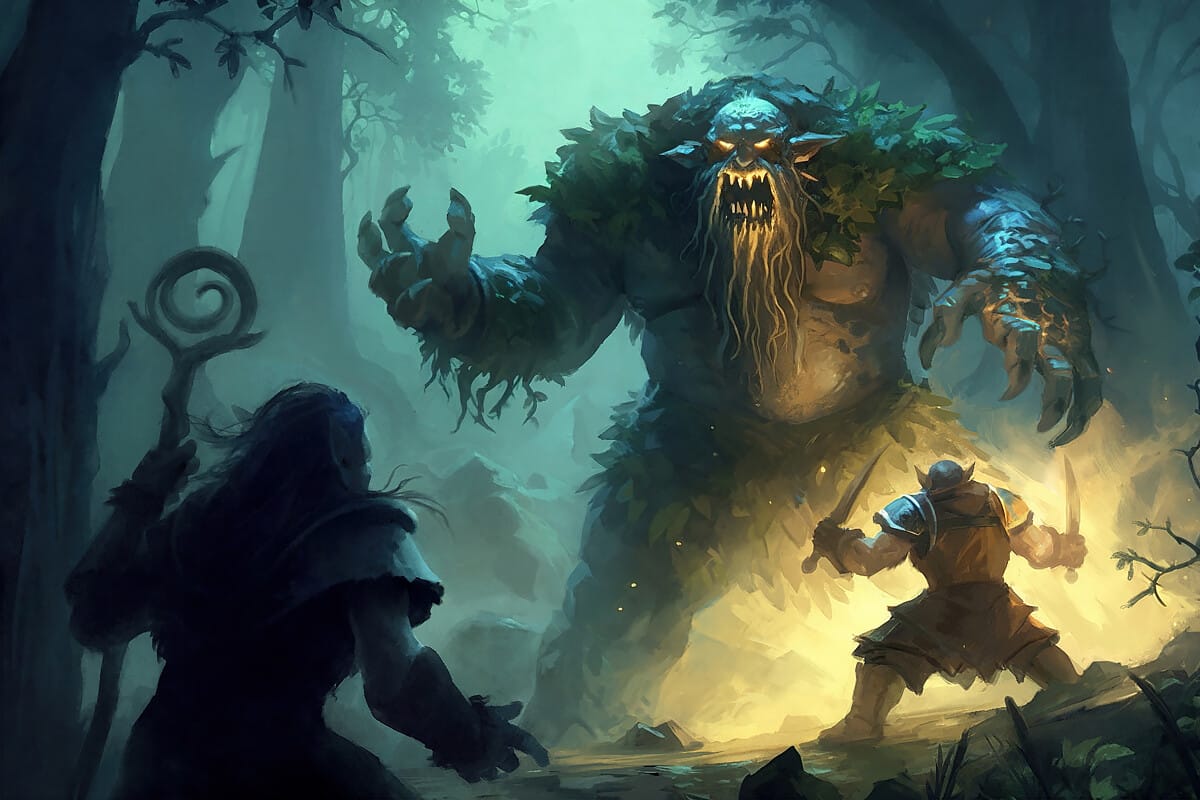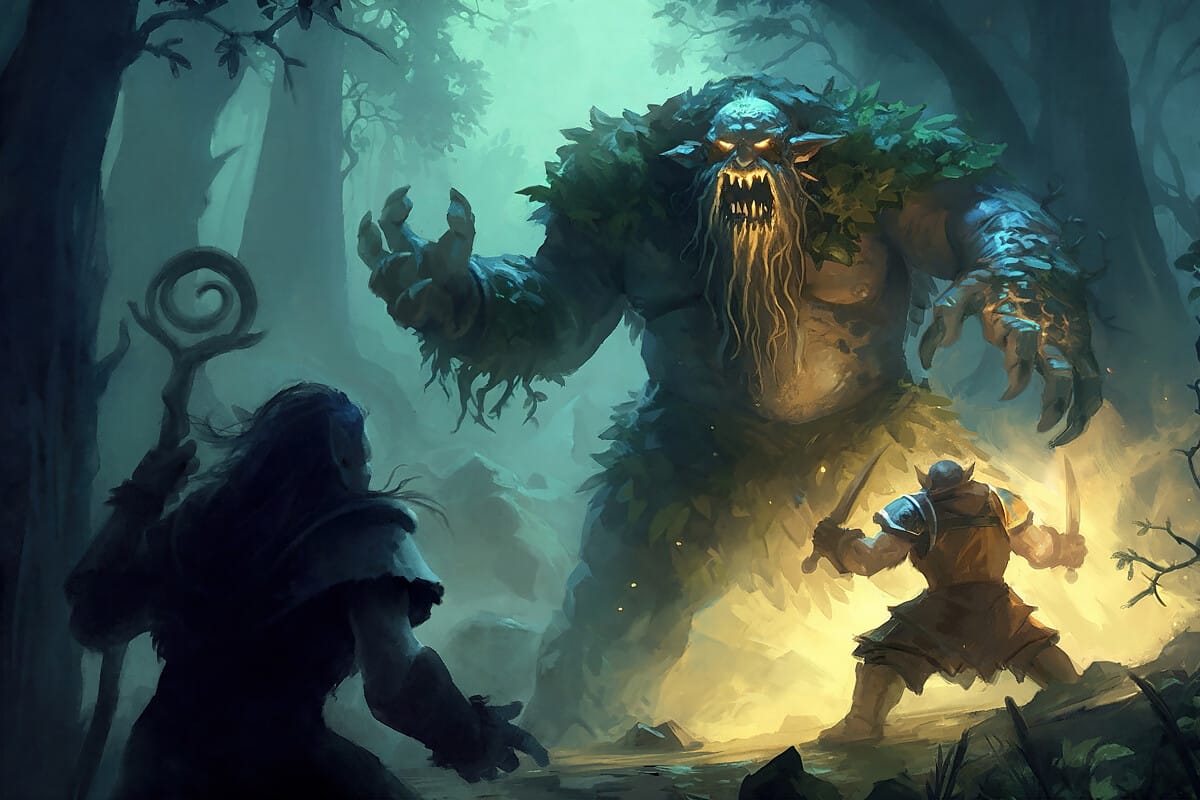4D Combat
Combat is the largest “engine” or “subsystem” within the Dungeons & Dragons 5E rules. One under-appreciated aspect of combat encounter design can transform your experience.

Combat is the largest “engine” or “subsystem” within the Dungeons & Dragons 5E rules. If your campaign features combat, it’s worth your time to consider making it fun and impactful. There’s nothing worse than slugfests and repeatedly hearing, “I hit them with my sword.” But one under-appreciated aspect of encounter design can transform your experience.

Campfire Ambush by Miro Petrov
It’s easy for most game masters to think of combat in two dimensions because we’re constantly presented with top-down battle maps. You already know that adding a third dimension (height) changes everything and expands your opportunities. But a fourth dimension can take things even further. How does your encounter change over time? There are three key tools you can focus on when considering the evolution of your encounter over time: monsters, environment, and timers.
Monsters
Focus on the number of monsters, their abilities, and their tactics. All three can change throughout a big, important battle. Waves of new monsters might arrive. A boss monster might become more dangerous when they’re bloodied. A group of wolves might drastically change their tactics when the alpha goes down. All of these dials can bring fun and exciting change to your combat encounter.
Environment
When looking at the environment, consider the terrain, the location, and hooks or objectives. The terrain itself can change with spells blasting chasms into the rocky surface or lighting the tavern on fire. Maybe a ledge that was once a vantage point crashes into the main battle, creating difficult terrain. Alternatively, the characters or monsters might pull the combat into an entirely new location. The fight in the flaming tavern spills into the street or the boss in the throne room retreats into the dungeon chambers filled with traps. Lastly, consider introducing new hooks or objectives during combat. A hostage situation develops mid-battle that begs for the characters to address it. A powerful magic item is revealed across the room that could turn the tide of the battle. Anything that clearly gives your player characters some advantage or incentive will change the dynamics and their immediate motivations.
Timers
Bringing this all together is the idea of timers. I’ve talked about these previously and others dive far deeper into the topic. In short, set a timer for when something significant is going to happen in the battle. Keep in mind that most 5E combat encounters last only 3-4 rounds at most. Make the timer known and visible to create tension at the table.
With these three tools, you can evolve combat encounters in fun and interesting ways. This will increase enjoyment, engagement, and opportunities for memorable moments in your games.
Game on.
